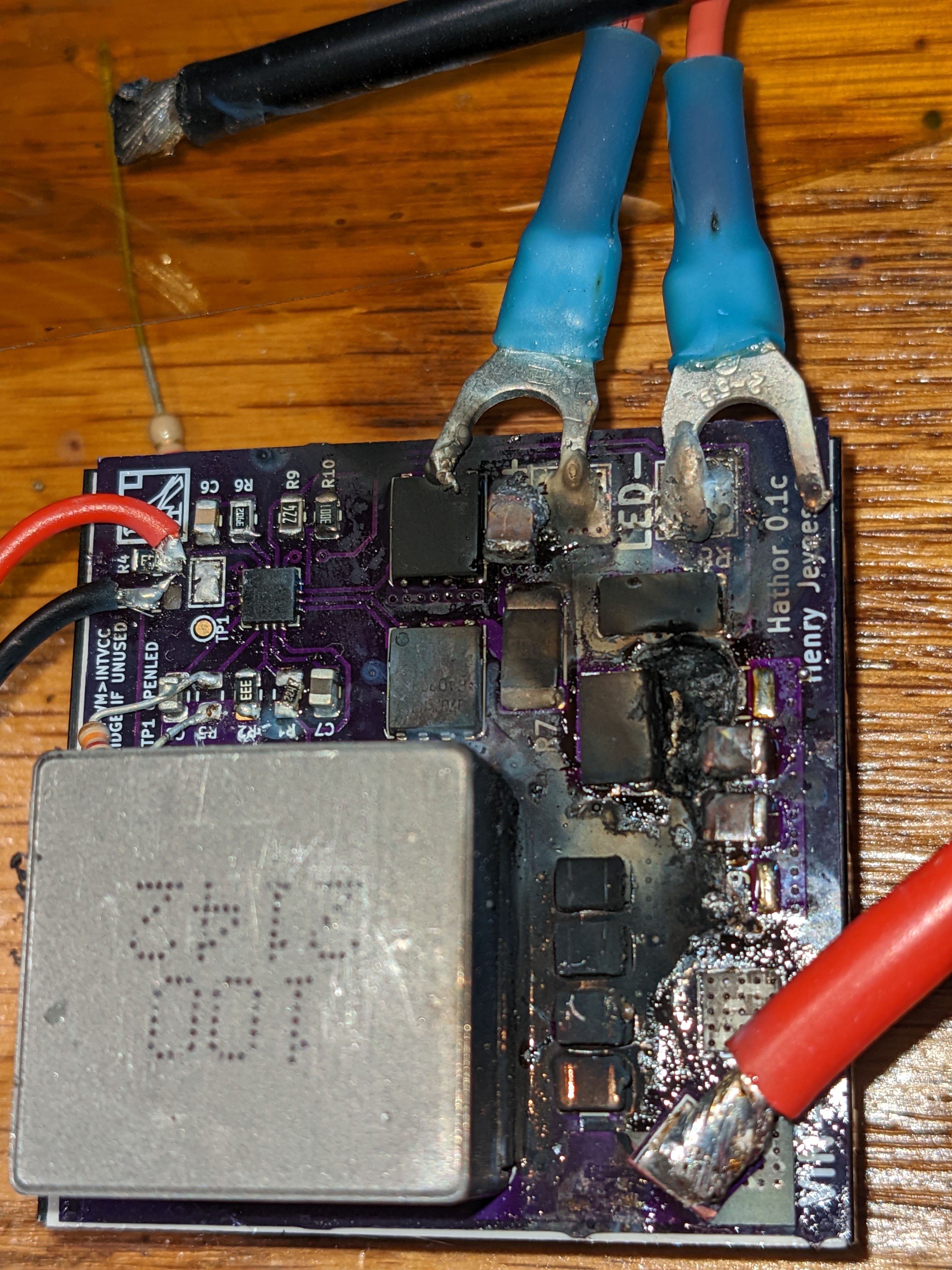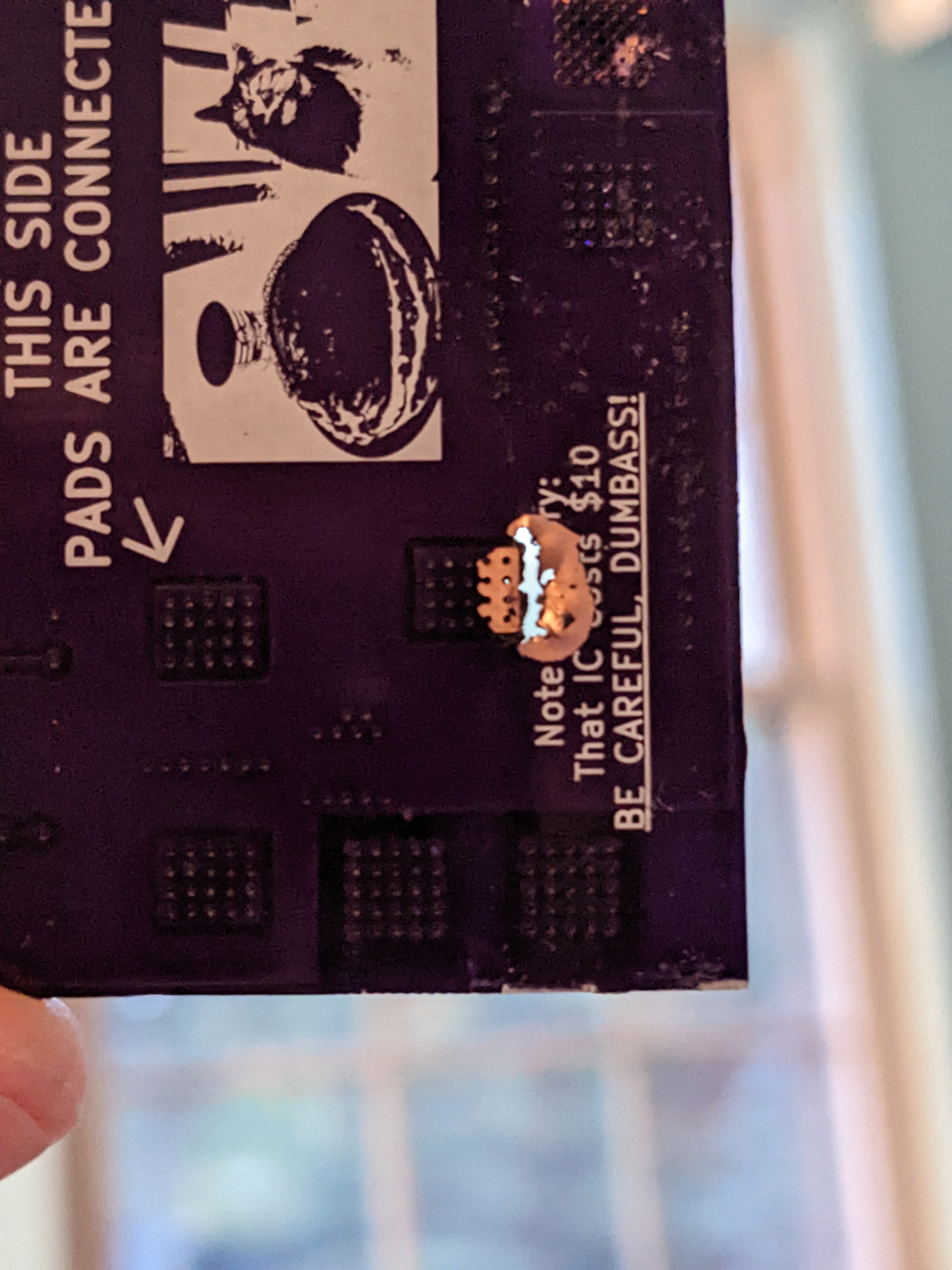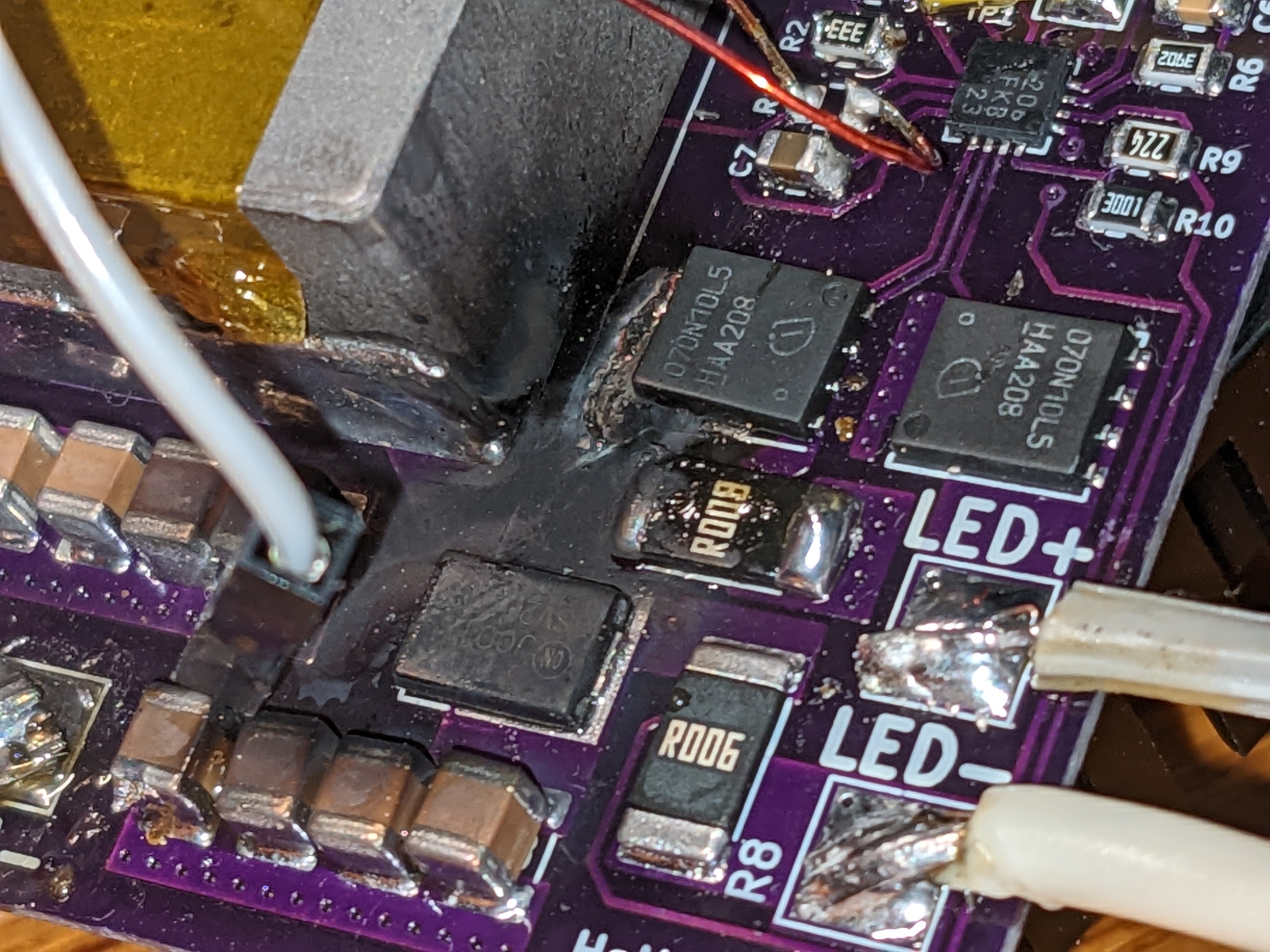Home / Electronics / Big Flashlight
High Power Flashlight
Burning holes in wallets and carpets since August 2022This monstrosity is my latest big project. It's a rather ludicrous 720 watt LED flashlight, built from scratch and housed in a custom aluminum extrusion frame. Total light output is expected to be nearly 70,000 lumens of glorious 3000K 97 CRI light. Higher output (up to 110,000lm) could be achieved with more efficient 70 CRI cool white COBs. As it stands, these things cost me $40 each, so I'm not in a hurry to buy more. I originally intended to use a Citizen CLU550, which is rated up to 536W per COB! That's pretty insane, but so is the price: $140. I got one on eBay for $70, but it turned out to be defective.
This project has been an interesting adventure for me. It's by far the most power I've ever worked with. It's also my first time using a PMIC with external switches and OSH Park's 2oz/0.8mm PCBs.
The LEDs
The emitters are a pair of Bridgelux Gen 8 Vero 29 COBs, rated 3000K, 97 CRI, and 360 watts each. These are absolute monsters, some of the highest power COBs on the market, but surprisingly compact. The plastic carrier is 49.2mm across, with a 29.1mm LES (light emitting surface). They still manage up to 142 lm/w at 42W. Mad!
Here's a comparison of the LEDs I'm using versus a higher CCT, lower CRI one.
| Model number | CCT °K | CRI | Nominal flux | Maximum flux |
|---|---|---|---|---|
| BXRC-30H10K0-C-8x | 3000 | 97 | 11796lm (136 lm/W) | 37554lm (104 lm/W) |
| BXRC-50C10K1-C-8x | 5000 | 70 | 17364lm (200 lm/W) | 55280lm (154 lm/W) |
Inom = 1300mA, Vnom = 66.7V, Pnom = 86.7W
Imax = 4750mA, Vmax = 75.8V, Pmax = 360.1W
Power
Big power means big power supplies. The whole thing runs off of a 16S LiFePO4 pack that I assembled from the guts of four 7Ah UPS batteries. It's actually four 4S packs wired in series to allow them to be separated and used elsewhere, but this isn't necessarily a good idea. It's complicated.
I could've used Li-ion or Lipo batteries, but both of those chemistries are very volatile. LiFePO4 has considerably lower energy density (by 30-40%), but it's much less dangerous to work with. Obviously, they can still dump a ton of power, and in that sense they're dangerous, but if over/undercharged, punctured, or otherwise abused, they're far less likely to explode in flames. They can also endure a lot more cycles than most other chemistries, usually quoted at 3,000-4,000 cycles with 100% depth of discharge. Huge caveat, though: you can't charge them below freezing.
The batteries are still the main limiting factor when it comes to power output. I could hypothetically pack even more power into a single ammo can, but this light is already drawing 14A, which is about what the original battery packs were rated for. I reckon I could push them a little further, maybe to 20 amps (just over a kilowatt), but it's hard enough to get rid of this much heat, and 720W is still about 50 times the power of my most powerful handheld flashlight.
I expect battery life to be about 20-25 minutes at maximum output. This can, of course, be extended by running the LEDs at lower power. At 20 watts (still a few thousand lumens), it'd last 18 hours. At 5 watts, it'd last four days, outputting 700ish lumens (about the same as a 75W light bulb). This doesn't factor in all the various parasitic draws and conversion losses, though, but that shouldn't take off more than 10%.
At its heart is a custom LED driver, based on the reference boost mode design for the LTC3756. As of yet, I've built two of them, and both failed in spectacular fashion during testing, both times due to user error (aka me being dumb). Revision 0.2 has yet to be manufactured... or designed, for the most part.




Designing in enough output capacitance has been interesting. The initial design used four 1210 SMD ceramic capacitors on the input and output. The highest value 100V caps I could source were 10uF. Maybe I could skimp on the input caps' voltage rating a little since this design isn't going to see above 60V in, but open circuit, the output will happily reach 100V. That's what the chip is rated for, after all.
Even as it stands, this driver seems pretty solid. It's 93-97% efficient depending on configuration, and I haven't even done much optimization yet. I might put it on GitHub at some point, but first, I need to try different components and improve its thermal management.
Component costs are quite high. The inductor could be downsized some, but the current one (a Bourns SRP2313 - absolute UNIT, and a real pain to solder with an iron) costs $8 in small quantities. The capacitors are $1 each, MOSFETs and diodes are $3-5, and the LTC3756 is $9. I don't really mind this for a one-off.
Optics
The optics will probably just be a couple of LEDIL "Lenina" reflectors mounted to "Lena" bases. It's a really neat modular system in which the reflector/lens just twist-locks onto the base. It could also run with no optics at all, just bare COBs. On paper, that would result in higher efficiency (reflectors absorb some light), but a much wider beam that appears dimmer since it's spread out over a larger area.